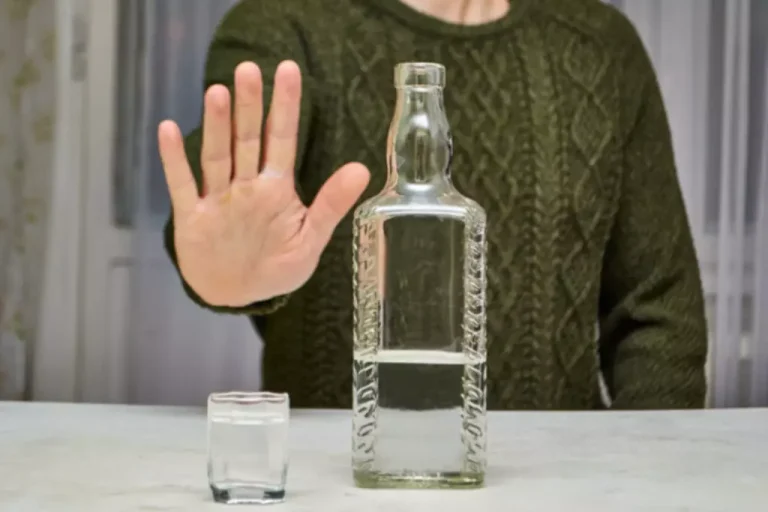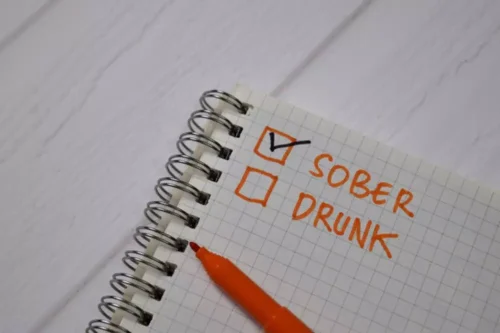How psychedelic drugs may help with depression National Institutes of Health NIH

However, human studies and clinical trials are only beginning to take place and we likely won’t see results for another couple of years. Previous studies have found that psychedelic drugs encourage plasticity by binding to a cellular receptor in neurons called the 5-hydroxytryptamine 2A receptor (5-HT2AR). These include serotonin, a chemical messenger affected by some antidepressant treatments. Thompson said it’s important for a facilitator to know if a patient has used certain medications, such as an SSRI (a common antidepressant) long term. It’s currently believed that SSRI’s can change the way someone responds to psychedelics such as psilocybin. Some people have reported conversations with people they’ve lost or returning to certain past experiences.

Controlled, experimental studies
They appear to work by encouraging the growth of new connections between neurons in the brain. TRD is a condition in which individuals with major depressive disorder do not respond adequately to at least two different treatments. Up to two-thirds of people with depression are not helped by the first antidepressant medication they try. Up to a third of people with depression are failed by multiple attempts at treatment.
What does psilocybin do? What is the experience like?
- In addition, given the exponential growth of interest in the use of psychedelics for mental illness, participants were asked if they were a healthcare provider who treats psychiatric disorders with medications.
- It’s currently believed that these psychedelic experiences could be necessary for potential therapeutic benefits, but more research needs to be done.
- These COMP004 study data were published in the March edition of the Journal of Clinical Psychiatry.
- Interestingly these changes were also related to positive mood effects,38 which suggests this might be a potential mechanism underlying alleged therapeutic effects in depression.
- Methodological details of the included experimental studies with low doses of LSD.
While this (microdosing) psychedelics research field is still in its infancy, preliminary findings indicate that low doses of both LSD and psilocybin affect assessed biological processes.30,38 A first study showed changed connectivity in brain areas involved in affective behaviour, after a single dose of LSD (13 mcg tartrate, p.o.). Interestingly these changes were also related to positive mood effects,38 which suggests this might be a potential mechanism underlying alleged therapeutic effects in depression. Of note, studies need to confirm (the persistence of) these effects in patient populations since this study was conducted in healthy volunteers, and the effect at brain and behavioural level was assessed at the acute state, not when the drug left the bloodstream. It is as yet unclear whether psychedelic microdosing is of therapeutic value for depression due to the limited amount of studies (with small sample sizes) that have been conducted. Nonetheless, the aforementioned effects on selective cognitive processes, resembling in a milder way the effects of full psychedelic doses,51,52 and without impairing cognitive processes,47 suggest that low doses of psychedelics could play a role in depression.

Experimental research with LSD
Because of our focus on classic psychedelic agents (i.e., tryptamines and phenethylamines with a primary mechanism of action believed to be agonism of the serotonin 5HT2A receptor), we did not query 3,4-Methylenedioxymethamphetamine (MDMA), which has a different mechanism of action and tends to produce different acute effects than classic psychedelics. Given the widespread emerging use of ketamine as a “psychedelic-like” agent for the treatment of major depressive disorder, we included this agent in our survey, although we recognize that it is not a classic psychedelic. First and foremost, a handful of small academic studies conducted in the last decade report that psychedelics—when administered in a clinical setting with psychotherapeutic support—produce remarkably rapid, robust, and sustained improvements in a variety of psychiatric and addictive conditions.
References to other published versions of this review
- The study sample averaged 38.55 (range 1-500) lifetime uses of a psychedelic, with most participants identifying psilocybin or LSD as their preferred psychedelic (psilocybin 51.6%; LSD 30.1%).
- There’s still a lot we don’t know about the biological effects of psilocybin and other psychedelics.
- Because of our focus on classic psychedelic agents (i.e., tryptamines and phenethylamines with a primary mechanism of action believed to be agonism of the serotonin 5HT2A receptor), we did not query 3,4-Methylenedioxymethamphetamine (MDMA), which has a different mechanism of action and tends to produce different acute effects than classic psychedelics.
- TRD is a condition in which individuals with major depressive disorder do not respond adequately to at least two different treatments.
- The authors noted correctly that the (fluctuating) medical conditions of the participants could have influenced the psychological state; hence, the self-rated anxiety.39 While the data seem to suggest a low dose of LSD does not support the therapeutic process, this study did not aim to test this hypothesis, and future studies in larger samples should corroborate this.
Finally, we propose that the brain mechanisms underlying the therapeutic effect of serotonergic psychedelics might be distinct from those underlying classical serotonin reuptake-blocking antidepressants. Despite the positive claims of microdosers who self-treat their conditions, no clinical trial to date has focused on the question whether (repeated) administration of psychedelics in low doses can serve therapeutic potential in affective disorders. The aim of the present review was to investigate, based on findings from (controlled) experimental studies in healthy volunteers and patient samples, whether there is scientific evidence supporting potential efficacy and safety of low doses of psychedelics in the treatment of affective disorders. While preliminary findings demonstrated the therapeutic efficacy of full psychedelic doses in the treatment of depression, anecdotal reports suggest that lower doses, without the psychedelic experience, are beneficial too.
- Nonetheless, the aforementioned effects on selective cognitive processes, resembling in a milder way the effects of full psychedelic doses,51,52 and without impairing cognitive processes,47 suggest that low doses of psychedelics could play a role in depression.
- However, human studies and clinical trials are only beginning to take place and we likely won’t see results for another couple of years.
- Thompson also differentiates between negative experiences and challenging experiences.
We sought to examine associations between frequency of psychedelic use and wellness-related outcomes, as well as the prevalence and types of harms engendered by past use. Isbell and colleagues published the findings of six experiments in which a range of LSD doses (0.25–2 mcg/kg or 10–180 mcg) was administered in several regimens, aiming to investigate the dose-response effect, the test-retest value of a series of mental and physiological measures, and tolerance after repeated doses of LSD.41 The latter was assessed in four studies, of which only two also included low doses (10–20 mcg) next to higher, psychedelic, doses of LSD. Of note, these findings were also published 1 year earlier, though less methodological detail was provided.43 The test-retest questionnaire was assessed after administration of 60 mcg LSD. Only the findings of the three studies administering low doses of LSD are described here. These all included self-rated and observed mental effects (e.g. perception/hallucinations, confusion/insight, nervousness, anxiety) and physiological measures (e.g. pupil size, blood pressure). The PAWS Study used an online platform to deliver a cross-sectional survey instrument designed to assess participants’ retrospective perspectives on the mental health effects of classic psychedelic use, as well as predictors of positive and negative outcomes from this use.


As clinical microdosing trials in depressed patients yet have to take place, some of the reviewed studies showed subtle positive effects on cognitive and affective processes that are dysfunctional in depressed patients. Of note, because this is based on small samples of mostly healthy, young volunteers, it is too early to draw conclusions about its therapeutic efficacy. Nevertheless, these preliminary findings warrant the exploration of the safety and therapeutic efficacy of microdosing psychedelics for depression. Nonetheless, this would require careful weighing up of the risks of discounting serotonergic antidepressants against the potential benefits of using serotonergic psychedelics in microdoses.
How does psilocybin alter the brain? We talked to a scientist to find out
In the low dose group however, anxiety increased after two sessions with LSD 20 mcg, and decreased after the open-label crossover to LSD 200 mcg – an effect that was also measurable at 12 months follow up. Of note, are psychedelics addictive the total sample size was very small, and the low dose was only give to three participants. The authors noted correctly that the (fluctuating) medical conditions of the participants could have influenced the psychological state; hence, the self-rated anxiety.39 While the data seem to suggest a low dose of LSD does not support the therapeutic process, this study did not aim to test this hypothesis, and future studies in larger samples should corroborate this. Psychedelic drugs such as psilocybin and ketamine are returning to clinical research and intervention across several disorders including the treatment of depression. This chapter focusses on psychedelics that specifically target the 5-HT2A receptor such as psilocybin and DMT.
Construct validities were 0.73 for mental health, 0.55 for general health perceptions, 0.52 for social functioning, 0.43 for role functioning, 0.37 for physical functioning, and 0.33 for bodily pain. Potential participants were recruited through free online platforms, social media, word-of-mouth, in-person, flyers/postcards, email, and snowball sampling (e.g., referrals from participants to others in their social networks). Online advertisements were targeted for psychedelic specific groups on Facebook, Reddit, and LinkedIn. Recruitment flyers were also posted in community public spaces where permitted. These recruitment materials guided participants to the study’s website at To enter the study, potential participants answered inclusion questions related to age (18 and older) and use of psychedelics (at least one time). Exclusion criteria were age younger than 18 and no past history of self-reported psychedelic use.
Seven-Item Generalized Anxiety Disorder Scale
If confirmed in subsequent populations, this will highlight the importance of using psychedelics as spurs to initiate changes in lifestyle/perspective that are mental health protective, Alcoholics Anonymous rather than attempting to use these agents as lifelong mood modifiers. Gasser and colleagues investigated the safety and efficacy of LSD-psychotherapy in patients with anxiety related to life-threatening diseases. Next to the experimental group who received LSD 200 mcg twice, they included an active control group receiving 20 mcg of LSD.
